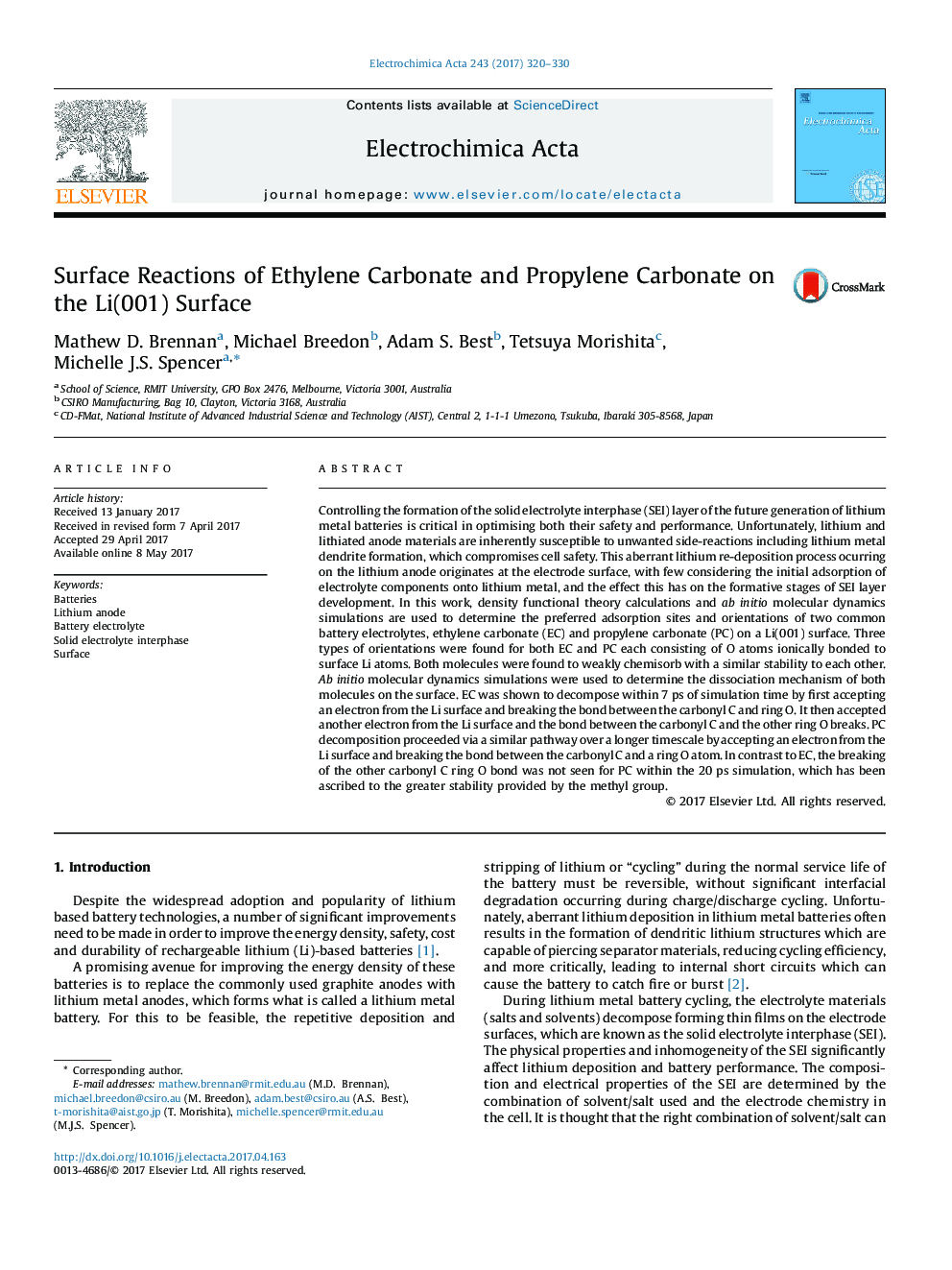| کد مقاله | کد نشریه | سال انتشار | مقاله انگلیسی | نسخه تمام متن |
|---|---|---|---|---|
| 4766859 | 1424114 | 2017 | 11 صفحه PDF | دانلود رایگان |
عنوان انگلیسی مقاله ISI
Surface Reactions of Ethylene Carbonate and Propylene Carbonate on the Li(001) Surface
ترجمه فارسی عنوان
واکنش های سطحی کربنات اتیلن و کربنات پروپیلن بر روی سطح لی (001)
دانلود مقاله + سفارش ترجمه
دانلود مقاله ISI انگلیسی
رایگان برای ایرانیان
کلمات کلیدی
موضوعات مرتبط
مهندسی و علوم پایه
مهندسی شیمی
مهندسی شیمی (عمومی)
چکیده انگلیسی
Controlling the formation of the solid electrolyte interphase (SEI) layer of the future generation of lithium metal batteries is critical in optimising both their safety and performance. Unfortunately, lithium and lithiated anode materials are inherently susceptible to unwanted side-reactions including lithium metal dendrite formation, which compromises cell safety. This aberrant lithium re-deposition process ocurring on the lithium anode originates at the electrode surface, with few considering the initial adsorption of electrolyte components onto lithium metal, and the effect this has on the formative stages of SEI layer development. In this work, density functional theory calculations and ab initio molecular dynamics simulations are used to determine the preferred adsorption sites and orientations of two common battery electrolytes, ethylene carbonate (EC) and propylene carbonate (PC) on a Li(001) surface. Three types of orientations were found for both EC and PC each consisting of O atoms ionically bonded to surface Li atoms. Both molecules were found to weakly chemisorb with a similar stability to each other. Ab initio molecular dynamics simulations were used to determine the dissociation mechanism of both molecules on the surface. EC was shown to decompose within 7 ps of simulation time by first accepting an electron from the Li surface and breaking the bond between the carbonyl C and ring O. It then accepted another electron from the Li surface and the bond between the carbonyl C and the other ring O breaks. PC decomposition proceeded via a similar pathway over a longer timescale by accepting an electron from the Li surface and breaking the bond between the carbonyl C and a ring O atom. In contrast to EC, the breaking of the other carbonyl C ring O bond was not seen for PC within the 20 ps simulation, which has been ascribed to the greater stability provided by the methyl group.
ناشر
Database: Elsevier - ScienceDirect (ساینس دایرکت)
Journal: Electrochimica Acta - Volume 243, 20 July 2017, Pages 320-330
Journal: Electrochimica Acta - Volume 243, 20 July 2017, Pages 320-330
نویسندگان
Mathew D. Brennan, Michael Breedon, Adam S. Best, Tetsuya Morishita, Michelle J.S. Spencer,
